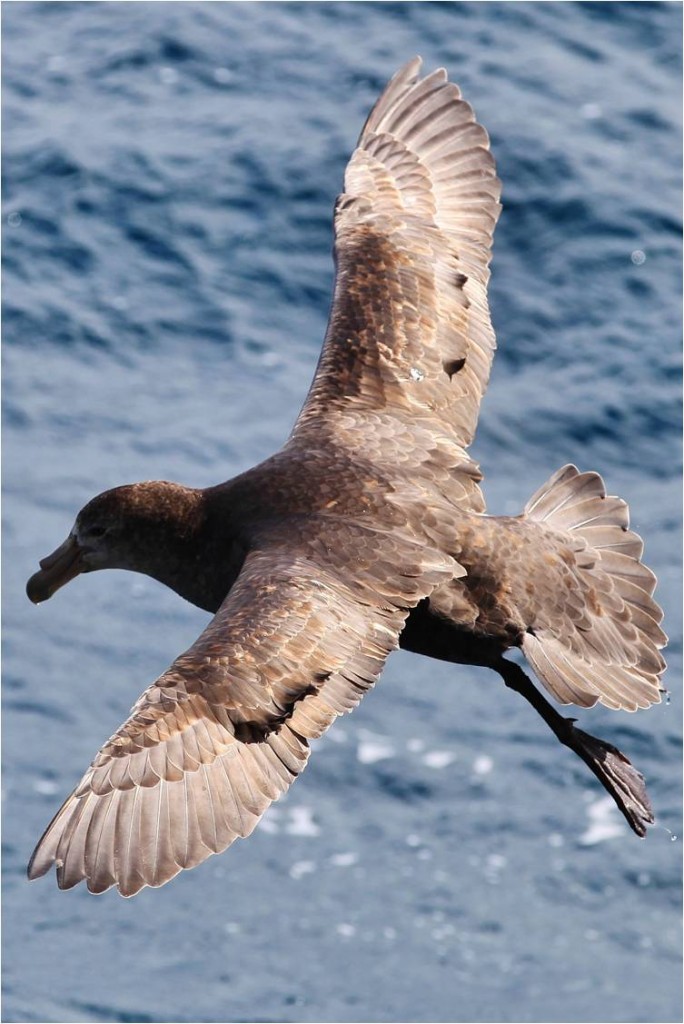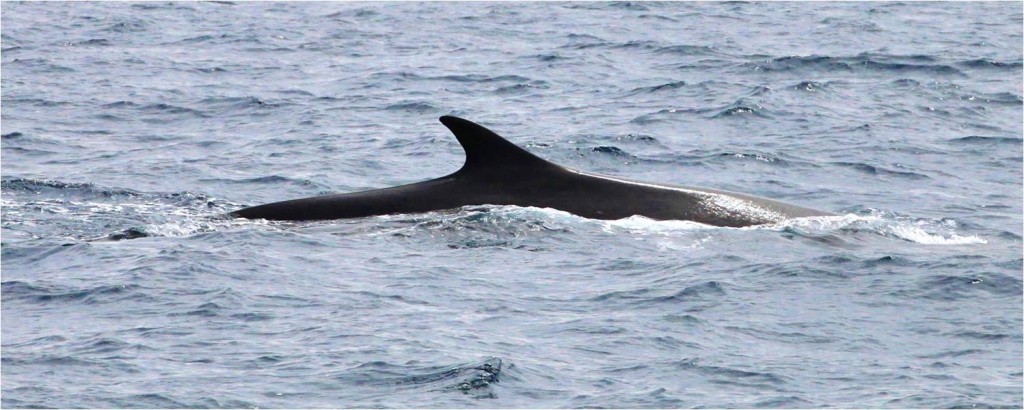Up until a few hours ago, today might have been termed a “slow news day”. If fact it would have been a slow news couple of days and mostly included the rather uncharismatic elements of science. The repetitive and routine. Well it can’t all be discovery, charismatic mega-animals and sight seeing now can it! For example all the electronic information for CTDs and the ROV come up through an umbilical cable which has power and data cables at its core and armoring on the outside. We have spent a day on maintenance of these cables and the associated winches and accessories. It involved a nice jolly to the South Sandwich Island trough, an area of sea in excess of 7000m metres deep not far from our current position (see the chart of the previous blog. The arc of triangles represents the trough). That is the deepest water I’ve ever knowingly been over. You could loose all but the biggest mountains on earth in there.
Then it was back to E2 to keep hunting for that elusive vent site that we currently know of as E2 north. A site “smelt” by CTD, but as yet unseen to the north of the sites we have been sampling for animals. Finding this site is important. E2 (now E2 south) is a funny site. While E2 is still venting, it seems to be waning. There is just not quite enough life there for a vent system in full flow and life tends to be clustered in very little patches hugging the best sites. This suggests some kind of relic and another area might therefore be seeding this one. Based on N-S prevailing currents one would first look to the north. We have been and spent a bit of time doing so already and been stumped.
So we have changed tactics to look for the vent. We have committed a greater amount of time to the chemical search to try and zoom in on the vent site and restrict our ROV search area much better. For a little over the last 24 hours we have been CTD tow-yoing.
Lets start with the what. I described before some of what the CDT does. Basically it is a pack of sensors in a frame that tell us how various characteristics of water changes as we lower the CTD into the depths. For us the three key measurements are temperature, the light scattering sensor and the Eh readings. They help us find the chimney smoke plumes. Water temperature rises close to venting so if we hit hot water we have to be very close a vent. This effect does not spread far. Spreading a little further from the vents are Eh anomalies. Eh tells us about the chemical character of the the water and it is very different in vent fluid. Lastly the light scattering sensor measures particles in the water. We pick up the “smoke” particles using this and this is the most widely dispersed effect but also the trickiest. Sediment blowing off a ridge will produce a similar signal to vents for example.

Based on the grey trip to the beak this is a Southern Giant-Petral, although we also have Northern Giant-Petral which has an orange tinge to the beak tip (by Chong Chen)
A CTD tow-yo is where the CTD is lowered to depth, usually to about 20m off the seabed and then partially raised up through the water so say 1000m water depth as we move to a new position and then it goes back down again. It therefore has an almost saw tooth depth pattern. Straight down and diagonally up, straight down and diagonally up….. It differs from the usual taking of water samples CTD where we find a spot and go down and then all the way back to the surface still in one place.
Now for the why. OK for the biologists this does not make great viewing but it is an essential part of searching. It is like scent tracking….walk a line and find a strong smell. find where the smell is stronger and weaker. Go back to the strongest point. Now you are in the plume. But is the plume coming from the north or the south? So then we do a transect perpendicular to the first centered on our strong smell point. Does it get stronger or weaker as we move north? Getting closer! Repeat process. Of course things are never quite that simple. We may intersect the plume at angles, the speed and direction of the plume change with the tides and currents and the shape of the plume, e.g. how high it rises, where it spreads out etc are all determined by the wider water character.
The upshot is WE FOUND HOT WATER!. A huge rise of 0.2oC above ambient. That may sound ridiculously small but it is not to be sneered at. While vents in their many forms may pump out a lot of hot water, the sea is a very big place and the signal, especially temperature is attenuated fast. It was worthy of a cheer and on the last planned drop of the day too. We must be within mere metres of venting to get that signal.
Alas, normally we would be diving the spot tonight but the weather forecast is not good. The seas are too rough for the ROV to be deployed safely unless we want to play ping pong with £5mil of kit off the side of the ship. And worse news is that the weather is likely to be poor for a couple of days. I should not complain. We have had some extremely good weather and this is supposed to be the world’s roughest sea. The silver lining? Well we can CDT in worse weather than we can ROV and bad weather will assist in breaking up the pack ice over our southern sites.
We are currently steaming overnight back to E5. While it is too deep for the ROV we can zoom in further on the venting that we found during our last little excursion down here. Who knows, we may get into hot water down here too and then the champers just might start flowing (but only half a glass please, we have consumption limits and a breathalyser on board…probably a good thing then that current plans have us working Christmas day).
–Newsflash–
Scientists to face the apocalypse with the same stiff upper used to survive elusive vents and sea ice.
Scientists aboard the RRS James Cook breath a sigh of relief as the extra hours found in the longest day (December solstice in the Southern hemisphere), allows completion of a planned days work…..for once.
Chris




